Basement Waterproofing
The Healthy Way
Unlike other waterproofers in New Jersey, we provide our customers with a streamlined process for all of their waterproofing needs. Our goal is to get to the crux of your home's issues. If we spot signs of water in your basement, we go right to the source of the problem, working hard to fix structural deficiencies to prevent problems like mold growth and foundation damage. We are proud to be New Jersey's one-stop shop for all of your basement waterproofing needs. New Jersey homeowners choose Healthy Way because our experts are friendly, experienced, harworking, and fully certified. We won't rest until your waterproofing problems are solved. Because we specialize in both interior and exterior waterproofing services, you won't have to worry about hiring a laundry list of contractors to correct your moisture problems. Healthy Way provides all-inclusive basement waterproofing in Montrose, it's no surprise that New Jersey residents trust Healthy Way to make their homes more livable every day.
Service Areas
The Healthy Way Difference
At Healthy Way, we strive to set ourselves apart from the competition by offering the best basement waterproofing services in New Jersey. We won't be happy with our work until you are 100% satisfied, whether you need a thorough moisture inspection or a large-scale waterproofing project. Our basement waterproofing experts are certified, trained, and have worked on more than 4,000 repairs. They understand that your moisture problems aren't like anybody else's, which is why all of our waterproofing proposals are created specifically for your home. You won't find any "one-size-fits-all" solutions here, and we wouldn't have it any other way.
- Best warranties in the industry
- Free initial inspection
- Full-service basement waterproofing
- Mold remediation
- Foundation repair
- Water management solutions tailored to your unique situation
Once your basement waterproofing project is complete, we make it a point to keep our staff available to address any questions or concerns you may have. Our goal is your 100% satisfaction, from the moment you call our office to schedule an inspection to the time you sign off on our work.
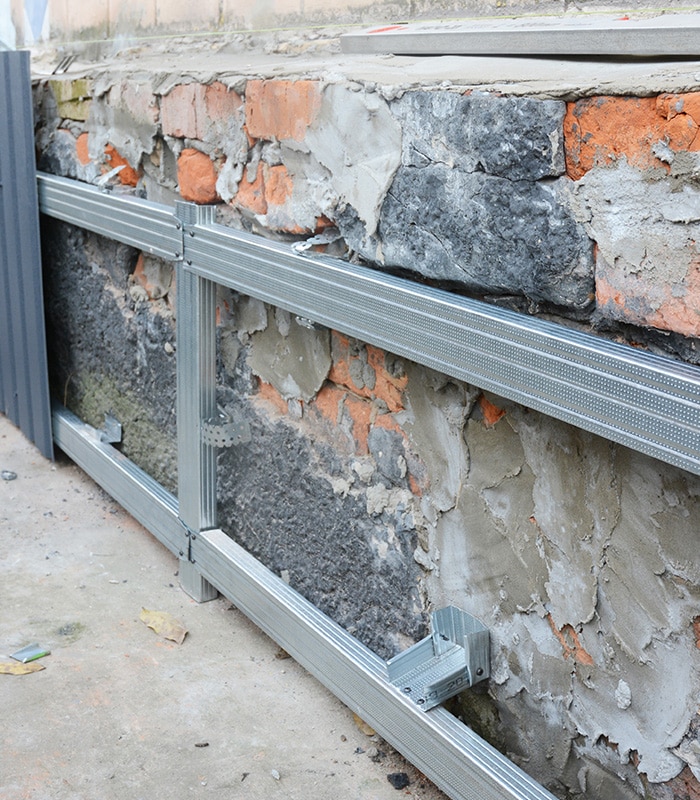


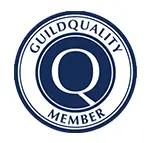
Waterproofing Services in New Jersey
With more than two decades of experience and a team of fully certified and trained waterproofing professionals, there is no waterproofing project in New Jersey that we can't handle. When not addressed, water and moisture problems can cause serious health risks for your family. We're talking buckling walls, sinking foundations, and even toxic mold. With your home's value and your family's health on the line, you must attack these problems head-on, and the best way to do that is by bringing in the Healthy Way team. Some signs of existing water problems in your home can include:
- Signs of rust or oxidation on metal fixtures
- Mildew residue
- Water stains on your foundation's walls and floors
- Erosion of your concrete
- Mineral deposits found on pipes
- Flooded landscaping after heavy rain or snow
- Pooling water around your foundation's interior
- Humidity levels above 60% in your basement or crawlspace
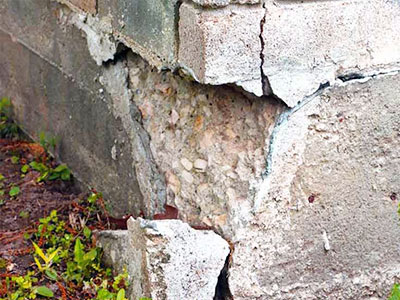


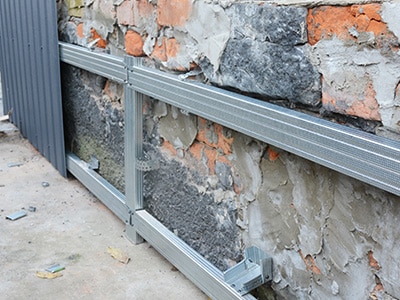
Basement Waterproofing in Montrose
Healthy Way has been providing the most trusted, effective basement waterproofing in New Jersey since 2007. Waterproofing your basement is crucial to protecting the value of your home and the safety of your family. That is why we only employ the best, brightest, fully-certified experts, who will treat your home like it was their very own. Taking shortcuts just isn't in our nature. We use innovative technology and time-tested techniques to discover and solve your basement's water-related problems.
Because basement wall leaks and water seepage are often caused by structural issues, external waterproofing is required. While some companies only seal the interior walls of your basement, Healthy Way goes the extra mile to fix your water issues inside and out. That way, your basement leaks stop for good.
Once we find the root of the water issues in your basement, we will get to work on a custom-designed solution that will exceed your basement waterproofing needs.
Our basement waterproofing services in New Jersey help prevent the following problems:
- Mold growth, which can cause serious health hazards for your family
- Basement flooding
- Loss of valuables
- Serious water damage to your home's walls and floors
- Decrease in home value
Don't wait to address the moisture developing in your basement - call Healthy Way today for a customized solution to your water seepage problems.
What Causes Moisture in Your Basement?
It's easy to spot water leaking through a crack in your basement, but most homeowners don't know that there is a potential for water issues without heavy rains or obvious signs of standing water. At Healthy Way, we try to educate our clients on the real causes of water in your basement. Here are two of the most common reasons why you might need basement waterproofing in Montrose:

The "Clay Bowl" Effect
It might not be evident on the surface, but many basements are built in a below-grade dip, which is surrounded by backfill. Because backfill is made up of soil that was removed during foundation digging, it creates an empty shape or "bowl" effect. Once the foundation is finished, this loose soil is placed back around the foundation. Unfortunately, soil of this consistency is more absorbent and porous than the undisturbed soil around it, which is hard-packed and less porous. When rain or thunderstorms occurs, the soil closest to your home becomes saturated, putting pressure on your basement walls.

Hydrostatic Pressure:
This kind of pressure affects homeowners with property built below the water table or on a hillside where water runs down a hill. When the soil around your foundation becomes saturated, it will expand and put intense pressure on the walls of your foundation and basement. This pressure can create cracks, giving water an easy route into your basement.
How Healthy Way Solves Your Basement Waterproofing Needs
Having a wet basement not only puts your health at risk, it lowers the value of your home and makes it more difficult to sell. The good news? We offer a number of waterproofing services and products to solve your problems fast. A few of our solutions include:
- Sump pumps
- Perimeter drainage systems
- Doorway drainage systems
- High-strength washer hoses
- Floor and wall crack repair
- Replacement windows
- Flood protection for your water heater
When you use Healthy Way for basement waterproofing in New Jersey, you can rest easy knowing that all our systems come with a written, lifetime warranty. This warranty is transferrable, meaning you can re-establish your home's value and give future owners confidence knowing that their new home is protected.
The Healthy Way Basement Waterproofing Process
Because every home is different, your basement waterproofing solution could be vastly different than that of your next-door neighbor. Many factors play a part when it comes to keeping your basement dry and safe for living. As a general rule, we approach each issue with a "prevention over repair" mindset. By taking this stance, we give our clients a more cost-effective, long-term resolution. We're not in the business of putting a "Band-Aid" on your water problem - we want to fix your issue completely, so you don't have to worry about recurring problems. Our effective basement waterproofing systems include a mix of the following strategies:

Interior Waterproofing
Interior waterproofing methods usually start with our team ensuring that any holes or cracks in your basement floors, walls, and windows are sealed properly. Sealing cracks in your basement is an important first step since this is usually the first place where water can enter your home. Our sealants keep your basement dry and help prevent more moisture from finding its way into your home. Interior waterproofing strategies like these also help lower humidity levels in your basement. While sealants and other interior waterproofing strategies help correct initial issues, they don't usually solve the underlying problem causing leaks in your basement. Those issues are most often found outside your home.

Exterior Waterproofing
Once our team is finished with your interior waterproofing, we will move to the exterior of your home. Waterproofing the outside of your home is often a more complex, nuanced goal. Because of the difficult nature of exterior waterproofing, we recommend you consult with our team of professionals before tackling the job on your own. Generally speaking, our team beings the outdoor waterproofing process by excavating the soil around your home's foundation. Once we remove the soil surrounding your foundation, our experts will apply a polymer-based sealant to any cracks we discover. This sealant is a long-term solution and should remain intact for the life of your home. While the Healthy Way team solves your outdoor moisture problems, we will also check your downspouts, to make sure they aren't clogged. An inefficient gutter system does a poor job of directing water away from your home's foundation, which can cause more moisture to seep into your basement over time.

Drainage Systems
One of the most common reasons that people need basement waterproofing in cityname is because they have a poor drainage system. A proper drainage system is paramount in keeping your basement dry and your family safe. These systems are meant to direct water away from your home and come in many forms, from French Drains to simple systems like ground soil. If you're thinking of installing a complex drainage system, save yourself some time and check the soil around your foundation first to make sure it isn't retaining moisture. If a more complex system like a sump pump is required, it's best to work with certified professionals like those at Healthy Way, to make sure your drainage system is installed correctly.
WHICH WATERPROOFING SOLUTION IS RIGHT FOR ME?
Because every home is different, it's hard to say what kind of waterproofing solution is right for your situation. Most homeowners require a combination of interior and exterior waterproofing. There are dozens of factors that come into play when it comes to waterproofing your home, so the answer to your problem may be different than your neighbor's. The good news is that Healthy Way is fully equipped to handle whatever moisture issue you're having. We will work tirelessly to make certain your basement is dry, mold-free, and safe to enjoy. That way, you can get back to living life rather than worrying about mold growth or foundation damage.
Contact UsGET IT DONE RIGHT, THE FIRST TIME
Other companies may offer temporary or partial solutions. At Healthy Way, we believe in correcting the problem completely, so you save money and have long-term peace of mind. Our goal is to fix your problem to prevent it from coming back, or we won't do the work!
If you require quality basement waterproofing, it all starts with a FREE inspection from our certified waterproofing experts. We will take as much time as you need to find your problem, develop a solution, and walk you through our process step-by-step.
Don't let water leaks and foundation damage create a dangerous environment in your home; contact the experts at Healthy Way today!
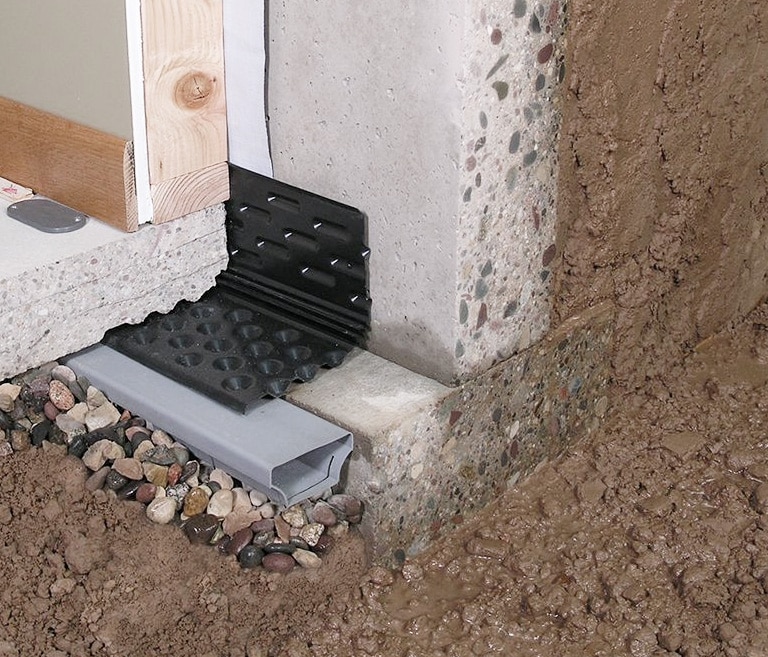
Latest News in Montrose, NJ
The South Orange and Maplewood (SOMA) Jitneys
Victoria Carter Teamhttps://patch.com/new-jersey/maplewood/south-orange-maplewood-soma-jitneys
The South Orange and Maplewood (SOMA) Jitneys This is a paid post contributed by a Patch Community Partner. The views expressed in this post are the author's own, and the information presented has not been verified by Patch.The communities of South Orange and Maplewood (SOMA), NJ, are culturally-rich commuter havens in the heart of northern New Jersey. With highly-rated schools, bustling downtowns, a plethora of restaurants, and an enviable commute into New York City, SOMA is a highly sought-after location to live, a...
The South Orange and Maplewood (SOMA) Jitneys
This is a paid post contributed by a Patch Community Partner. The views expressed in this post are the author's own, and the information presented has not been verified by Patch.
The communities of South Orange and Maplewood (SOMA), NJ, are culturally-rich commuter havens in the heart of northern New Jersey. With highly-rated schools, bustling downtowns, a plethora of restaurants, and an enviable commute into New York City, SOMA is a highly sought-after location to live, and homes that go on the market move quickly. Located along the Midtown Direct train line, SOMA has another lesser-known perk — a jitney bus service that transports residents to the local train station where they can hop the train into New York Penn Station or Hoboken.
With convenient stops dotted throughout the towns, the jitney is convenient, environmentally friendly, and a partial solution to limited station parking. Many potential SOMA homebuyers that commute into the City even evaluate their housing options based on a home’s proximity to the jitney stops.
If you’re thinking of moving to South Orange or Maplewood, here are a few things to know about the SOMA jitney.
The South Orange Jitney
Dating back two decades, the South Orange jitney began with a single route and two buses. The service grew to four routes and seven buses, and after a few service reductions during COVID, is now organized around two main routes that run on weekdays in the morning and evening:
? Newstead/Wyoming, and
? Montague/Ward/Tuxedo Park/Montrose
Flexible and convenient, the South Orange jitney will sometimes add a 5-minute wait onto its scheduled times should the Midtown Direct trains run late. For town residents, a jitney pass is $300/annum, and for non-residents, it is $450/annum.
South Orange’s early designation as a “Transit Village” helped fund the original jitney. Today, the town is perhaps better known for its many shops, restaurants, the South Orange Performing Arts Center (SOPAC), and Floods Hill.
General information, schedules, and fees for the South Orange jitney can be found on the township website.
The Maplewood Jitney
With morning and afternoon routes, the Maplewood jitney runs from Monday through Friday, shuttling residents to the Maplewood train station. A combination Jitney/Parking decal fee is $300/annum. For a jitney pass without parking, the fee is $62.50/annum, or residents can pay $2.00 per ride.
The three primary routes for the Maplewood jitney are:
? Maplecrest and Hilton jitney
? Elmwood and Parker jitney
? Wyoming jitney
Some challenges remain for the jitney service due to the pandemic, and ridership has not recovered to pre-COVID levels.
General information, schedules, and fees for the Maplewood jitney can be found on the township website.
Flexible and convenient, jitneys are a great reason to consider living in SOMA
Jitneys invariably help the local economies of the towns they serve by fulfilling unmet transportation needs. Their flexibility allows them to expand or contract services as needed, and jitneys are relatively inexpensive to operate. As evidenced during the ups and downs of COVID ridership, jitney routes can be redrawn and redeployed quickly. As important, jitneys do not prevent more permanent transportation infrastructure from being put in place as a community’s transit needs grow. They make public transportation more accessible for residents and lessen vehicular traffic during peak commuting times.
If you have questions about commuting, SOMA, or are looking to buy or sell a home in Maplewood, South Orange, or any of our northern New Jersey communities, I would love to assist you. A member of my team would be delighted to take you on a town tour. Contact Victoria Carter at (973) 220-3050 or email [email protected] to get started.
This post is an advertorial piece contributed by a Patch Community Partner, a local brand partner. To learn more, click here
Board of Education Candidates Respond to TAPinto SOMA
TAPintohttps://www.tapinto.net/towns/soma/sections/elections/articles/board-of-education-candidates-respond-to-tapinto-soma-18588b9c-5955-46ec-aa6e-187baf6da18d
SOUTH ORANGE & MAPLEWOOD, NJ - Six people are running in the November election for three, 3-year-long seats opening on the South Orange-Maplewood School Board.The only incumbent on the ballot is Board Member Johanna Wright. Current Board President Thair Joshua and Board Member Erin Siders are not seeking re-election. The field of candidates is rounded out by Regina Eckert, William R. Gifford III, William M. Meyer, Ritu Pancholy, Nubia DuVall Wilson and Johanna Wright.TAPinto SOMA asked all the candidates a ...
SOUTH ORANGE & MAPLEWOOD, NJ - Six people are running in the November election for three, 3-year-long seats opening on the South Orange-Maplewood School Board.
The only incumbent on the ballot is Board Member Johanna Wright. Current Board President Thair Joshua and Board Member Erin Siders are not seeking re-election. The field of candidates is rounded out by Regina Eckert, William R. Gifford III, William M. Meyer, Ritu Pancholy, Nubia DuVall Wilson and Johanna Wright.
TAPinto SOMA asked all the candidates a set of questions related to their candidacies. We are publishing a series of articles that highlight each of the prospective board members' answers.
Sign Up for FREE SOMA Newsletter
As it turns out, two candidates have opted to campaign as a tea, which they have named Doing Better Together. They are William Meyer and Ritu Pancholy. In recognition of their having partnered, we are publishing their responses to the TAPinto SOMA questions as a single article. This continues to fall in alphabetical order as does the other candidates.
William Meyer
Meyer, an attorney, has two children, a rising second grader at the South Mountain School and a daughter who is entering the Montrose Early Childhood Center as a preschooler in September.
He is running as a team with candidate Ritu Pancholy. “Ritu and I have a complementary set of professional experiences working to ensure that a school district meets its legal obligations, Ritu from within a district administration and myself advocating on behalf of parents,” Meyer said.
This is his first time seeking public office, but Meyer said he’s been involved in other forms of public service. “My commitment to public service until now has focused on direct service work, including six years in a nonprofit working with families around the poverty line and providing community trainings, serving as a NYC small claims court arbitrator, providing pro bono representation at my law firm, serving on the South Mountain School PTA, and doing extensive volunteer work at my kids’ schools,” he said. “I look forward to the opportunity to represent our entire SOMA community should I be elected.”
Meyer said his decision to seek election to the board derives from a desire to see the SOMA schools prosper.
“I love our schools and I want to see them succeed in providing a great education across the board, equitably and effectively,” he said. “We have opportunities to do even better for all our children, and I see board service as a way to lend my voice, vision and time to those efforts, especially in light of my specialized background in education law.”
Meyer said his career experience will make him a valuable member of the board. “My professional career has been focused on representing students with special needs,” he noted. “I am an attorney in New York, and since 2006 I have represented the families of children with disabilities in securing the appropriate services that they were not receiving from their school district.”
He said the work he’s done in that area has given him “tremendous insight into the diverse ways a child may need to learn, and unfortunately also the many ways a school system can fail that child.”
Meyer said he wants to bring to the district “those insights into how we can best serve all our students from the outset,” and would leverage his “years of working collaboratively with parties across the table” to bring a “collegial and productive voice” to the board of education.
“My goal is to ensure that the district remains on an upward, forward-looking trajectory and is laser-focused on providing the best education possible to all our students,” Meyer said. “The board’s purpose is to ensure the well-running of the schools through supervision of the superintendent and the district. This oversight is crucial as the Intentional Integration Initiative and Long Range Facilities Plan continue forward, but in other areas as well.”
Meyer pointed to improving how families access special needs’ evaluations and appropriate instruction and services for children with disabilities and different learning needs.
“I intend to focus on ensuring district compliance with state and federal law related to students with disabilities, seeking data from the district necessary to monitor whether we are adequately meeting those needs, making sure we are giving adequate support to teachers in the classroom to meet the needs of all learners and proactively looking at policy updates that can help improve the district’s special services processes,” he said.
Meyer had some good things to say about the current board’s activities, particularly its efforts to intentionally integrate the schools.
“I moved into this community while the district was in the midst of resolving lawsuits regarding its history of de facto racial discrimination in instruction and discipline, and preparing to roll out its integration initiative,” he said. “I was encouraged to know that my kids would be joining a school system that knew it had problems to address, and was ready to take them on. I look forward to working with the board, administration and community to continue our work toward full inclusion and equity in a way that is responsive to the needs of all our families.”
Ritu Pancholy
Pancholy, who is running on a slate with William Meyer, has two children in the SOMA district, a 10-year-old son entering fifth grade and a 7-year-old daughter headed for third grade. Both are at South Mountain Elementary School in South Orange.
“This is my first time running for public office,” Pancholy said. “I am very excited to campaign this fall and look forward to meeting as many parents in our district as possible.”
Although the run for school board is Pancholy’s first foray into elective politics, she served as president of SOMA Action, “a progressive organization in SOMA that seeks to mobilize community members on a variety of issue areas,” she noted.
Pancholy also said she’s served as a volunteer parent coach for her daughter’s Cougars Soccer team. “I’ve had a great time working with kids and families in that position,” she said.
Her decision to seek a seat on the school board stemmed from a desire to give back to the community, Pancholy said.
“I believe in the power of a robust public education and community,” she commented. “I also believe change occurs on the grassroots level locally through citizen action. I am passionate about giving back through volunteering in our community and believe that if I am elected to a position on the BOE this fall I will be able to make a contribution due to my professional and personal experience, love for this community and commitment to working hard for public education.”
As for qualifications, Pancholy pointed to her education and employment history, which gave her “deep experience” in the world of education.
“I joined the NYC Department of Education (DOE) as an attorney in the General Counsel’s Office in 2010 and spent several formative years of my career there,” Pancholy explained. “I was responsible for ensuring the DOE’s existing policies were upheld, reviewing policies to ensure they were revised to reflect current law, defending the DOE in employment litigation post termination after a teacher or administrator sued the DOE, and representing the DOE in litigation or compliance reviews brought by U.S. Department of Justice or Office for Civil Rights.”
The work as a lawyer for the nation’s largest school district taught Pancholy about the complexity of running a district, she said. Pancholy asserted she is “intimately familiar with the matrix of federal and state legislation that impacts all decisions a school district makes.”
Pancholy currently run her own human resources employment law consulting company. “I counsel my clients to ensure that they are creating respectful, inclusive workplaces,” she said. “I’ve seen the impact a school district can have on students, families, teachers, and communities, and I’m ready to work for our school district to have the best possible impact for our community.”
If elected to the board, Pancholy would work to uplift the schools, she said.
“I care deeply for our teachers, our administrators, and our school community,” Pancholy commented. “If elected I want to ensure that we build on our prior success by supporting our teachers and administrators in their challenging roles. Our community is not perfect, but we are rightfully proud of all of our community’s students.”
Pancholy also praised the district’s students. “Our students impress me with their intellectual curiosity, their spirit, their ability to make friends and treat one another with respect irrespective of their differences,” she said. “My goal, if elected, is to ensure that our policies and practices support students inclusively and equitably, that we continue not only to meet our obligations under federal and state law, but also to strive to be the best in the state of New Jersey. Our community and our students deserve that.”
Pancholy thinks the current SOMA board has done some great things. She cited the Intentional Integration Initiative “because as a community we should strive to ensure that our elementary and middle schools reflect our community’s diversity.”
She also praised the universal pre-school option “because studies have demonstrated that an early education program that is robust leads to long term educational gains,” and the capital plan “because our aging schools and infrastructure will be updated and we must continue to meet our obligation to serve all students in buildings that are safe and modernized.”
Pancholy said she was in favor of removing President Thomas Jefferson’s name from a district elementary school and renaming it the Delia Bolden Elementary School, “because it reflects our community’s commitment to intellectual honesty.”
Higher Interest Rates Are Changing Scotch Plains-Fanwood Real Estate Market
JOHN MOONEYhttps://www.tapinto.net/towns/scotch-plains-slash-fanwood/sections/real-estate/articles/higher-interest-rates-are-changing-scotch-plains-fanwood-real-estate-market
SCOTCH PLAINS, NJ -- Strong economic growth, lower unemployment, and strong wage growth have been associated with high home price appreciation. This has been true of the U.S. economy for much of the past decade… but things have changed.The Federal Reserve recently announced that it would raise interest rates in an effort to curtail inflation. Quickly rising interest rates tend to slow home price appreciation. According to ...
SCOTCH PLAINS, NJ -- Strong economic growth, lower unemployment, and strong wage growth have been associated with high home price appreciation. This has been true of the U.S. economy for much of the past decade… but things have changed.
The Federal Reserve recently announced that it would raise interest rates in an effort to curtail inflation. Quickly rising interest rates tend to slow home price appreciation. According to Urban Institute, during the recession in 1981, home price appreciation decelerated from 12.9% to 1.1%, and from Sept. 1994 to Feb. 1995, it decelerated from 3.2% to 2.6%.
Expect rising mortgage interest rates to impact on the housing market for people who are looking to sell their homes. Typically, sellers prefer to take offers from buyers who are already preapproved for a mortgage. Now, with rising interest rates, buyers preapproved at lower rates a few months ago may no longer qualify for the same loan amount at today's higher rates. Thus, the concern for sellers is that if they accept a bid from a buyer who does not qualify for the mortgage amount they need to purchase the house, the seller will have wasted valuable time.
Sign Up for FREE Scotch Plains/Fanwood Newsletter
While low interest rates tend to increase demand for property and drive up housing prices, higher interest rates naturally tend to do the opposite.
What’s new in the equation is that home prices, especially new construction, have gone up in other sections of the country. So empty-nesters who wanted to “cash out” and get top dollar for their homes and move to less expensive markets in places like North and South Carolina or Florida now are not reaping the same windfall they did a year ago. Home sale prices are beginning to edge downward, while prices for housing in other states have increased substantially from relative bargain pricing before the pandemic.
“Certain buyers are not qualified to buy what they thought they were going to be able to buy previously. Thus, somebody's who is looking for a $500,000 house, now is maybe only able to afford a $430,000 house,” said George Hansen of ERA Suburb Realty. “Higher interest rates change things. Some people may no longer be willing to buy a house in the $500,000+ price range. I have started to see a few price reductions, and we are starting to see houses sit a little longer.”
There is an explanation why Scotch Plains-Fanwood and Westfield are still hot, according to Hansen.
“Our market doesn't change too much because we have great school systems, and we're local to a train station,” he said.
However, people who want to sell and cash out at maximum prices, maybe have missed the boat.
“We are not seeing the bidding wars like we did last year. Prices are not going to stay that high, they will retract,” he added. “I'm starting to see price reductions and houses sitting longer -- unless you have a home that is really spectacular -- then, people still fight over it.”
Hansen said that since the pandemic almost every property would have 10 showings in the first day, and houses were put under contract within just three or four days.
“We're not seeing that as much right now," he said.
"Home prices in other markets have gone up across the country, not just in New Jersey and the New York metro area. Some people who want to stay local just move across the border to the east side of Pennsylvania. Our taxes are increasing, and their property values are increasing in Bucks County, for example," Hansen explained.
"The PA market is similar to what we see here Scotch Plains-Fanwood and Westfield. Their prices are going up too. It’s like a wave,” Hansen said. "The price increase is pushing into Delaware and Pennsylvania and continuing down to Tennessee. Nashville is booming. Numbers are also increasing in South Carolina, North Carolina, and Florida."
TAPintoSPF.net is Scotch Plains-Fanwood’s only free daily local news source. Sign up for our free daily eNewsletter and “Like” us on Facebook and Twitter @SPF_TAP. Download the free TAPinto App for iPhone or Android. Are you a business interested in reaching our audience? Email [email protected].
Only 7 original McDonald's golden arches still exist, and one is in N.J.
Steve Strunsky | NJ Advance Media for NJ.comhttps://www.nj.com/news/erry-2018/12/1a10ff04728920/only-7-original-mcdonalds-gold.html
A single-arch McDonald's sign, seen at a location in Magnolia, N.J. (Al Amrhein | For NJ Advance Media)If you're driving on Route 30 in Camden County just south of the New Jersey Turnpike, and you see a McDonald's Hamburgers sign mounted on a golden arch, you might want to pull over, even if you're not hungry.It's not the fries or Big Macs that are so special — McDonald's is known for its strict quality control and uniformity of its food — but the sign itself.The single-arch marquee is an original vers...
A single-arch McDonald's sign, seen at a location in Magnolia, N.J. (Al Amrhein | For NJ Advance Media)
If you're driving on Route 30 in Camden County just south of the New Jersey Turnpike, and you see a McDonald's Hamburgers sign mounted on a golden arch, you might want to pull over, even if you're not hungry.
It's not the fries or Big Macs that are so special — McDonald's is known for its strict quality control and uniformity of its food — but the sign itself.
The single-arch marquee is an original version that dates to 1962, and is one of only a half dozen like it from among the 37,000 McDonald's locations around the world, according to collectors, curators and other sign experts who have been wowed by what may be the Borough of Magnolia's most widely-renowned piece of architecture.
"I would say it’s a historic treasure," said Tod Swormstedt, executive director of the American Sign Museum in Cincinnati, Ohio. "Especially when there are only a handful left, certainly no more than 10."
A single-arch McDonald's sign, seen at a location in Magnolia, N.J. (Al Amrhein | For NJ Advance Media)
Among the admirers of Magnolia's sign is Debra Jane Seltzer, who has driven around the country documenting vintage signs and other examples of American pop culture gradually disappearing from their original settings.
Seltzer hosts the RoadsideArchitecture.com web site, which features several pages on McDonald's restaurants and signs, including the Magnolia's.
In a phone interview, Seltzer said the sign originally stood in another part of town, a couple of miles away, where the original McDonald's building is long gone. The building that now accompanies the sign, a relatively common white stucco structure with a red mansard roof, is not architecturally significant, she said.
Seltzer said the Magnolia sign is one of just seven remaining single-arch McDonald's "crest" signs scattered along the byways of America, still bearing the family crest of Richard and Maurice McDonald.
The brothers had founded the chain in California, before they were joined in 1953 by Ray Kroc, who bought them out but kept their name, and built McDonald's into a global brand. The story was recently dramatized in the ironically titled film, "The Founder," starring Michael Keaton in the title role as Kroc.
Besides Magnolia's, the six other remaining crest signs are in Independence, Missouri; Warren and Saint Clair Shores, Michigan; Winter Haven, Florida; Akron, Ohio — though the sign's crests have been covered; and Pine Bluff, Arkansas, whose sign is on the National Register of Historic Places.
Seltzer and others noted that the Magnolia sign is in remarkably good shape for a 56-year-old outdoor marquee.
“I think it’s very special," said Seltzer. "It’s one of a very few that are left.”
Enhanced Google photo of McDonald's in Mt. Ephraim, N.J.
Before Ronald, there was Speedy
Before there was Ronald McDonald, the curly-haired clown with the striped socks, there was Speedee, a McDonald's mascot who personified the concept of fast food when the term was still new. The smiling, fleet-footed burger chef is seen here on a reproduction of an early single-arch sign outside a McDonald's restaurant on South Black Horse Pike in Mt. Ephraim, also in Camden County just a few miles from Magnolia.
The red-and-white-tile restaurant with the twin arches was also a reproduction, built along with the sign in the year 2000, said Seltzer.
“The one in New Jersey is not original,” Seltzer said of the Mt. Ephraim restaurant.
The original restaurant that accompanied Magniolia's 1962 sign would have looked very much the retro structure built in Mt. Ephraim, The design, with its white and red exterior tiles, twin arches and sloping, cantilevered roof, dates to the company's earliest days under Ray Kroc, and lasted through the 1960s.
The owners of the Mount Ephraim and Magnolia franchises did not respond to requests for comment.
A spokeswoman for Chicago-based McDonald's Corporation, Amanda Pisano, said the Mount Ephraim location originally opened in 1962, while the Magnolia restaurant where the crest sign now stands dates to 1996.
They are among 266 McDonald's now operating in New Jersey, she said. The first one opened in Fair Lawn in 1958.
"I do not have a list or database of other vintage signs in the state," Pisano wrote in an email.
McDonald's in Downey, California. Photo by Brian Hong
The oldest arches still glowing
Authentic versions of that first golden-arch restaurant design are even rarer than single-arch crest signs, according to Seltzer, who documents just two of them: one in San Jose, California, built in 1962; and the oldest McDonald's still in operation, in Downey, California, which opened in August 1953.
Now, even Mt. Ephraim's circa 2000 reproduction of the walk-up design has been obscured, after its red, white and yellow exterior and interior were remodeled in McDonald's latest style, with muted colors, contemporary fixtures and furniture, and large touch screens where customers enter their orders.
“Everyone really liked the old way," said the manager of the Mt. Ephraim McDonald's, Danielle Kearney, referring to the vintage style. "But they also like the new way.”
The oldest McDonald's location still in operation is this walk-up burger stand built in 1953 in Downey, California. It was the second McDonald's built using the twin-arch design.
The exceptionally rare sign out front features a neon likeness of Speedee, the chain's original mascot. Speedee was phased out beginning in the early 1960s, and later replaced by the Ronald McDonald clown.
The sign in Magnolia, like others erected in 1962, was among the first to put Speedee to rest.
Speedee was revived on retro reproductions like the one erected in Mt. Ephraim around the turn of the century.
Christopher Placek | The Daily Herald va AP
Remembering when hamburgers were 15 cents
This retro structure was built around the turn of the century in the Chicago suburb of DePlaines, Illinois, as a replica of the first McDonald's built on the same spot by Ray Kroc in 1955 and demolished 29 years later, according to Seltzer.
The replica served as a McDonald's museum before being disassembled in the summer of 2018. The tops of the golden arches above the roof line had already been removed when this picture was taken in July.
Helen Bradley, who has lived in Magnolia for 66 of her 89 years and founded the borough historical society in 1990, said the sign's original location was at the Intersection of Route 30, also known as White Horse Pike, and Jefferson Avenue, less than a mile south of where it now stands. Bradley was living in town when the original McDonald's opened in 1962.
"I remember the hamburgers were 15 cents," she said, accurately quoting the price that was spelled out on signs older than Magnolia's.
Bradley, who lives about a block from the sign's current location, was unaware of its rarity or significance to the history of McDonald's or American roadside architecture.
But referring to its relocation in the mid-1990s, she added, "I know that when they moved they said they were taking that sign with them, so they must have known that it was worth something."
Unlike its Pine Bluff counterpart on the National Register, the Magnolia sign has no historic designation, according to Bradley, who asked to be sent information about the sign's provenance.
The "skinny M" McDonald's sign on Route 9 in Freehold (Enhanced Google photo)
'It’s doing what signs are meant to do.'
Another admirer is Dave Waller, a collector in the Boston area who recently bought a vintage McDonald's sign from the American Sign Museum.
His sign, a single-arch version that includes the old Speedee mascot, was erected in Wichita in 1956 and later salvaged from the demolition of what Waller and Sworstedt, the museum director, believe was the first McDonald's in Kansas.
Looking at online photographs of the 56-year-old Magnolia sign, Waller said it seemed to be in mint condition.
One thing he admired most about it, he added, was that, "It’s doing what signs are meant to do, and that is advertising the products they were meant to advertise.”
He hopes it will keep doing just that.
“People don’t seem to appreciate things until they're gone," Waller said. "And then they say, 'What happened to that?'”
Vineland's first NFL player to be honored by city on Sept. 29 with street name, key
Tom McGurkhttps://www.courierpostonline.com/story/sports/2022/08/30/vinelands-piccone-to-be-honored-by-city-with-street-name-key/65457451007/
VINELAND – Lou Piccone, the first Vineland High School football player to compete in the National Football League, will be honored with a street dedication and key to the city on Sept. 29.The City of Vineland made the announcement about Piccone’s special day, which will start at the corner of Montrose Street and S.W. Avenue. The dedication takes place at 11 a.m.Later that evening, the Key to the City presentation and dinner reception will be held at the Greenview Inn starting at 6:30 p.m. Tickets are ...
VINELAND – Lou Piccone, the first Vineland High School football player to compete in the National Football League, will be honored with a street dedication and key to the city on Sept. 29.
The City of Vineland made the announcement about Piccone’s special day, which will start at the corner of Montrose Street and S.W. Avenue. The dedication takes place at 11 a.m.
Later that evening, the Key to the City presentation and dinner reception will be held at the Greenview Inn starting at 6:30 p.m. Tickets are $75 per person. For reservations, please call 856-794-4000, ext. 4814, or e-mail [email protected]<mailto:[email protected]< a>
Piccone played nine years in the NFL, six with the Buffalo Bills and three with the New York Jets before retiring in 1982.
“Lou Piccone was known as a gritty football player who always gave it his all on the field. But above all, he is a kind and gentle man who never forgot where he came from,” Vineland mayor Anthony Fanucci said in a news release.
“Lou was the quintessential utility player who could fill several positions. His work ethic and contribution on special teams and as a receiver made him a fan favorite, and they loved to show their appreciation by chanting ‘Lou, Lou, Lou’ whenever he took the field. He has been an inspiration to many that have donned the ‘Fighting Clan’ red and grey uniforms, and it will be an honor to welcome him back to Vineland to show our appreciation.”
A 5-9, 175-pound wide receiver, kick/punt returner, Piccone signed a free agent contract with the New York Jets in 1974. That season, he led the league in kickoff returns with 39 and kickoff return yards with 961. He was traded to the Bills in 1977 and had all of his six career touchdowns over his first three seasons with the team.
Reflecting on his NFL career, Piccone said in a news release, “My father Lew is my hero and he deserves a lot of the credit for my making it. Because I had an education degree, my father wanted me to use my brains instead of my brawn. ‘You are too small,’ he said. I think that's what really did it because he had forgotten all of the stories he told me. My father was only 5-7 and he was a professional boxer in the 1920s and '30s. He won 84 fights and lost three. Once he knew I was serious about making it in the NFL, he was in my corner all the way."
It’s been a big year for former Vineland football players. Jamil Demby was a member of the Super Bowl champion Los Angeles Rams in February and Isiah Pacheco was drafted by the Kansas City Chiefs in June. Both players were honored by the city in separate ceremonies in April and June, respectively.
Tom McGurk is a regional sports editor for the Courier-Post, The Daily Journal and Burlington County Times, covering South Jersey sports for over 30 years. If you have a sports story that needs to be told, contact him at (856) 486-2420 or email [email protected]. Follow him on Twitter at @McGurkSports. Help support local journalism with a digital subscription.
Disclaimer:

